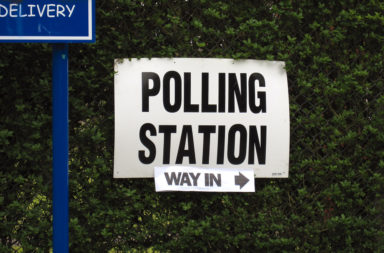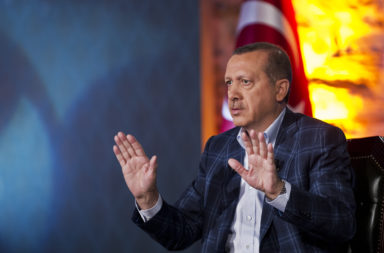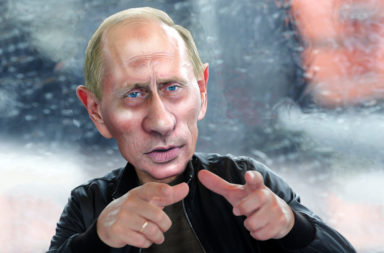US President Barack Obama visits Hiroshima today.
The first sitting American president in the first city hit deadly by the first American atomic bomb in 1945.
30 years ago I met the only individual who witnessed both beginnings of the atomic age, an American soldier with Jewish background.
He bombed Hiroshima and Nagasaki.
Now I have his war decorations and documents at home, remembering the unique use of this new weapon of mass destruction.
His name is First Lieutenant Jacob Beser, a then 24-year-old member of the Air Corps U.S. Army as a Radar-Counter-Measure Officer, who was on board of both B-29-bombers which flew the first atomic missions against Hiroshima and Nagasaki.
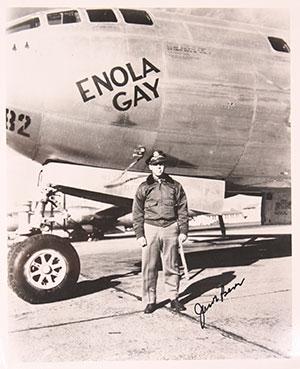
I met him together with a common friend, Colonel ret. Joe Gaston, First U.S. Army, near Baltimore in 1986 many years before he passed away in 1992. This article is dedicated to Joe on his 90th birthday.
I now hold two historic documents in my hands: the letter from 20 September 1945 from the Headquarters of the 20th Air Force from San Francisco awarding him and the crew the Silver Star and from 22 September the document awarding them the Distinguished Flying Cross.
These documents tell again the daring task of dropping the first atomic bomb in combat.
The Silver Star letter reads: “For gallantry in action while engaged in aerial flight against the Japanese Empire on 6 August 1945. These individuals were combat crew members of the B-29 aircraft which flew from a base in the Marianas Islands to drop on the city of Hiroshima, Japan, the first atomic bomb to be used in warfare. Flying 1500 miles over open water to the coast of Japan, they manned their assigned positions and crossed the island of Shikoku and the Inland Sea. They constantly faced the danger of being hit by anti-aircraft fire, enemy fighters, or suffering mechanical or other failure … Throughout the mission the element of hazard from the unknown prevailed, for this was the first time this bomb, much more detructive than any other in existence, had been dropped from an airplane. The effect it would have on the airplane of these crew members was only to be estimated…. At 0915 the bomb release was pressed. The bomb was cleared, and fell towards the planned objective …”
No one had in advance prepared the airplane’s crew in detail of the effect the atomic bomb would have. Jacob Beser witnessed this with his own eyes over Hiroshima:
“After we had dropped the bomb on Hiroshima, the plane turned sharply 170 degrees. The explosion lit up the interior of our plane like a flash of lightening. As I looked out of the window I couldn’t believe my eyes. The mushroom cloud of the nuclear explosion changed colors continually. It looked as if one kicked up sand at the beach in still water.”
In the preparation phase, the Air Force put together a special unit under the code name “Silver Plate” which would enable it to deploy a nuclear weapon anywhere in the world.
Initially, according to Jacob Beser, one assumed that the atomic bomb would be deployed somewhere in Europe, most likely in Germany in the Ruhr Valley. But as the war in Europe was approaching its end, his bomber unit was ordered to the Pacific.
There, the Americans were preparing for the invasion of the Japanese islands, which was to begin in November 1945. Three million soldiers were to be used in the battle for Japan on the American side. According to the estimates of the Army command, 300,000 soldiers were expected to fall in the battle for the lowlands around Tokyo alone.
The use of the atomic bomb was planned as a particularly effective device in air warfare.
Initially, five Japanese cities stood on the American’s target list: Hiroshima, Nagasaki, Kukura, Nihama and Kyoto.
“The leaders of Japan had lost touch with reality. This cost the people of Nagasaki their lives and missed all opportunities to avoid the nuclear disaster. Without the surrender, the U.S. would have used seven more atomic bombs against Japan, one more after 18 August against Kukura and three more each in September and October 1945.”
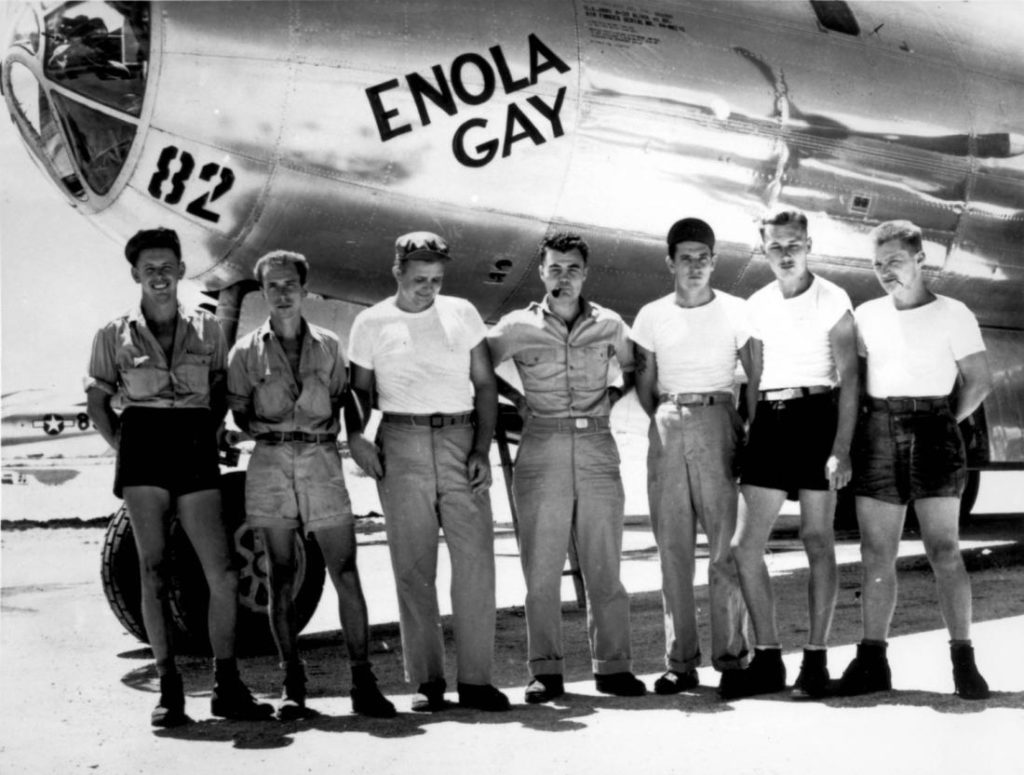
According to Jacob Beser, Kyoto was removed from the list first because it was a religious location. Secretary of War Henry L. Stimson struck Kyoto from the A-bomb list over the objections of General Leslie Groves, head of the Manhatten project, because of its cultural significance and as he had liked this city since his honeymoon there.
The Japanese leadership missed all opportunities to avoid the nuclear disasters. On 26 July 1945 U.S. President Truman and the other allies outlined in the Potsdam Declaration the terms of surrender for Japan. Two days later it was rejected by Japanese Prime Minister Kantaro Suzuki who declared that his government would ignore (mokusatsu) it. Emperor Hirohito did not challenge this hard position of the government and made clear on 31 July, that “the Imperial Regalia of Japan had to be defended at all costs.” Truman decided to use the new weapon to bring a quick end to the war through fear of further destruction.
Hiroshima was selected first because the maximum destructive force of the shock wave was expected there due to the geography.
On 6 August 1945, the Enola Gay left its base and steered toward Hiroshima, its first target. Kukura and Nagasaki were planned as alternatives. Three hours earlier, airplanes had flown over these cities and reported the weather conditions to the bomber. On board, the crew in conjunction with military command, decided for the bombing of Hiroshima.
Jacob Beser had no moral qualms about the use of nuclear weapons in Hiroshima. He had seen the return of U.S. prisoners of war, among them nurses who had had their tongues cut out. Japan had fought hard and with determination on its own soil. Many more people would have been killed as a result of an invasion than by both atomic bombs.
The crew was not told about the A-bomb, just “a weapon” as it was top secret. Beser was responsible to monitor the working of the fuse-device that set off the bomb when radar beams bouncing off the ground indicated that the weapon had fallen to a precise altitude of 1,850 feet for an air burst of maximum destructiveness in Hiroshima. He also had to make sure that no enemy radar had already used the same frequency as the fuse for setting off the bomb.
When “Little Boy” exploded with the equivalent of 12,000 tons of TNT it killed 78,150 of Hiroshima’s population of 255,000. More than 25,000 were injured and 13,425 people were never found.
Nagasaki came within a hair’s breadth of avoiding a nuclear holocaust. Actually, the bomb “Fat Man” was to have been detonated over the city of Kukura. However, so much smoke hung in the air above this location that the pilot of the bomber, after circling for an hour, was unable to find the target. As Japanese airplanes closed in, the machine turned away in the direction of Nagasaki.
There were also technical problems on board. The fuel pump for the 600 gallon reserve tank did not work. In this case, the “Fat Man” was to be dropped over the ocean in the water and the plane was to return to its base with less weight. Navy Captain Richard Ashworth, however, decided differently. He flew to Nagasaki and as the officer responsible for the drop spotted a street intersection through a break in the clouds, “Fat Man” was dropped. The bomb fell on an industrial area, rather than in the middle of a residential area five kilometers away as had been planned; the number of casualties would have been much higher otherwise.
In Nagasaki 37,000 people were killed by the A-bomb and at the end of 1945 the same number died due to radiation or injuries.
The messages by radio Saipan and the many leaflets dropped after the bombing of Hiroshima by American planes warning of more destruction were ignored by the Japanese government. Even after Hiroshima it did not respond to the Potsdam Declaration still dreaming of a surrender in honor including no occupation and the punishment of war crimes by the Japanese themselves.
The leader of Japan had lost touch with reality and cost the people of Nagasaki their lives.
Not knowing that Roosevelt and Churchill had pushed Stalin at the Yalta Conference in February 1945 to join the war against Japan, the Emperor and Foreign Minister Togo wanted to send Prince Konoye for peace negotiations to Moscow. Churchill’s idea to avoid a harsh “unconditional surrender” to the U.S. was ignored by the new President Truman.
The Japanese leaders had hoped for too long to use the still neutral Soviet Union as mediator—which now had signed the Potsdam declaration and informed Tokyo of the USSR’s unilateral abrogation of the Soviet-Japanese Neutrality Pact launching an invasion of Manchuria and declaring war.
The senior leadership of Japan now wanted to impose martial law to stop anyone attempting to make peace.
So the Nagasaki bombing combined with the Soviet attack were the two strong levers to bring the fanatic and militaristic leadership of Japan to surrender.
Otherwise the invasion of Japan would have cost millions of Japanese people and hundreds of thousands of American soldiers their lives because of pure fanaticism as in Adolf Hitler’s Third Reich, where as many civilians and soldiers died in the last years between 1944–1945 as in the preceding five years of war.
The United States would have used seven more atomic bombs against Japan, one more after 18 August and three more each in September and October.
Emperor Hirohito—after hearing about the second bomb in Nagasaki—gave up all demands of a conditional surrender, with the exception of the prerogatives of His Majesty as a Sovereign ruler, and authorized in an Imperial conference minister Togo to notify the Allies that Japan would accept the surrender under this condition.
As the Allies left intact, in principle, the “Throne of Japan”—using the new wording that the free will of the people of Japan will decide about their own political system—on 14 August, Emperor Hirohito recorded his capitulation announcement—just five days before the third A- bomb was to have been dropped. Referring to Hiroshima and Nagasaki he said:
“During the planned second atomic attack on Kukura, the crew did not find the target for one hour because of thick smoke. It also had technical problems and almost had to drop the atomic bomb into the ocean and return to the base. But the B 29 flew to Nagasaki and dropped “Fat Man” five kilometers away from the planned target point, therefore killing far less people than calculated.”
“The enemy has begun to employ a new and most cruel bomb, the power of which to do damage is, indeed, incalculable, taking the toll of many innocent lives. Should we continue to fight, not only would it result in an ultimate collapse and obliteration of the Japanese nation, but also it would lead to the total extinction of human civilization … This is the reason why We have ordered the acceptance of the provisions of the Joint Declaration of the Powers.”
Was the use of A-bombs against cities a war crime?
No, but within the grey area of fighting a war. Hiroshima was used as headquarters of the Fifth Division and Field Marshal Hata’s 2nd General Army, which commanded the defense of southern Japan with 40,000 military personal in the city. Hiroshima was a communication center, an assembly area for troops, a storage point and had several military factories as well.
Would a second A-bomb in Nagasaki have been used after a Japanese surrender?
No, the crew had radio contact and the order not to bomb in case the U.S. had received the Japanese agreement to surrender.
Why did the Americans only wait three days after Hiroshima before using the second A-bomb against Nagasaki?
In order to shock the Japanese leadership to surrender, the U.S. wanted to put maximum pressure on the Emperor. Even after the most deadly conventional bombing raid against Tokyo on 9 March 1945, in which with 80,000 dead more people died than in the A-bomb attacks, the Japanese government did not surrender. The three days were not used by the Japanese government to send signals of surrender. Only the second A-bomb convinced the Emperor that fighting no longer made sense for his nation. Therefore, a second A-bomb was needed.
Why did the Emperor surrender?
For two equally important reasons: the sudden attack of the Soviet Union and the fear of further A-bombs.
Why not use it only against military targets or as demonstration, but not against two cities?
The Japanese military did not care about massive military losses as shown in the bloody battles for the two islands Imo Jima and Okinawa where many thousands of soldiers died. Those uses would have had no effect to push for surrender.
Did the U.S. want to show the Soviet Union its power?
No, this was not important. The U.S. President still treated the USSR as a main ally and left the Soviet Union its influence in North Korea and China—a severe mistake giving the USSR and Communist China much more power and influence in Asia.
Jacob Beser, father of four and grand-father, in answer to the question if he would fly on such a mission again responded, “Under the same conditions, certainly. The atomic bombs ended the war against Japan. But these conditions no longer exist today. The deterrent has worked thus far because a nuclear holocaust would be the terrible reality for any attacker.”
